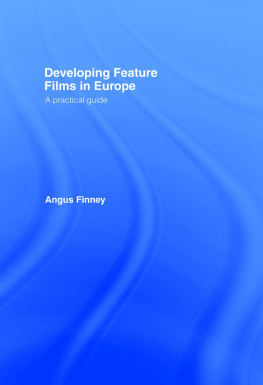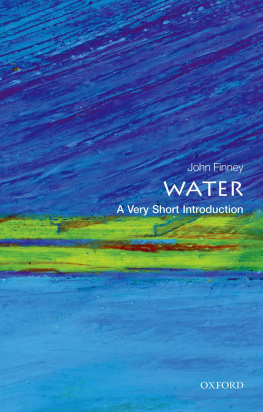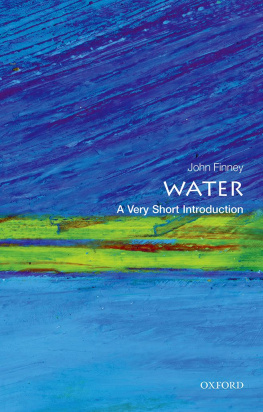Developing Feature Films in Europe
A practical guide
Angus Finney
First published 1996
by Routledge
2 Park Square, Milton Park, Abingdon, Oxon, OX14 4RN
Simultaneously published in the USA and Canada
by Routledge
270 Madison Ave, New York NY 10016
Routledge is an imprint of the Taylor & Francis Group
Transferred to Digital Printing 2007
1996 Angus Finney
Typeset in Palatino by WestKey Ltd., Falmouth, Cornwall
All rights reserved. No part of this book may be reprinted or reproduced or utilised in any form or by any electronic, mechanical, or other means, now known or hereafter invented, including photocopying and recording, or in any information storage or retrieval system, without permission in writing from the publishers.
British Library Cataloguing in Publication Data
A catalogue record for this book is available from the British Library
Library of Congress Cataloguing in Publication Data
A catalogue record for this book is available from the Library of Congress
ISBN 0-415-13661-X
ISBN: 978-1-135-10239-5 (epub)
Publishers Note
The publisher has gone to great lengths to ensure the quality of this reprint but points out that some imperfections in the original may be apparent
Dedicated to Tiernan MacBride, for his generous support to Europes film industry. RIP.
Contents
3.1 Introduction to the national systems
7 What next?
Directory of Contacts
Preface
The current crisis in the European film industry could be summed up by the fact that over the last two decades, European films have suffered a progressive loss of their own theatrical market and two-thirds of the cinema-going audience.
In most European countries, American-produced films are attracting more than 80% of the cinema box-office revenues in some countries this figure exceeds 90% and 40% of Europes television audience ratings. Only 20% of European films are shown in territories beyond their national borders and very few of these films are distributed successfully throughout Europe. Overall, European-produced films have been increasingly restricted to their domestic markets.
The highly realistic scenario outlined above explains the measures of support that the European Commission has been providing for the European audiovisual industry, including the 1991-1995 MEDIA Programme in general, and the Media Business School (MBS) in particular.
Three key elements are needed for the development of a strong European film industry. They include the need to create a market for products, the production of films aimed for that market and the development of a training scheme for professionals. Or, what would amount to the same thing, concerted action in the development and distribution of audiovisual products and training in business skills. The three concepts apply to the major policy themes currently under consideration in the EU and represent the three main areas in which the new MEDIA Programme, announced as MEDIA 2, will take action in the future.
These three areas are not isolated factors they call for horizontal coordination. Action in training should focus on projects worthy and capable of being developed and produced for a strong market.
At the MBS we believe the pivotal point lies in research and the access to factual data connected with the market. European producers need a better knowledge and understanding of the market which they can only achieve through professional training supported by research and a publications policy. This scheme, which also has a direct bearing on development and distribution, has been a crucial part of the work at the MBS over the last 5 years and has proved to be a key element in the development of actions capable of addressing the priority elements to be dealt with in the new EU action plan.
Developing Feature Films in Europe A Practical Guide is being published with a view to emphasizing the role of development within the overall process of film-making. Strong development is crucial if our films are to reach a wider European and international audience. The book is the first in-depth examination of current European development practices and we hope will highlight for professionals the potential improvements in this key area.
I would like to thank the author, Angus Finney, for his meticulous work, and also all those professionals who have lent their opinions and numerous experiences to making this new publication on the European audiovisual industry possible.
Fernando Labrada
MBS General Manager
Acknowledgements
The methodology behind the research project upon which this MBS publication is based was as follows: in order to cover Europe as a whole, a team of professional researchers was established by the author. Reports of their research into development formed a considerable bank of material for this publication.
The research team for this publication was: Martin Blaney (Germany), Margaret Dolley (Norway and Denmark), Anna Franklin (Eastern Europe), Patrick Frater (France), Linda Moore (Spain), Alois Razoumeenko (Iceland), Ruppert Widdicombe and Anneli Bojstad (Portugal), Deborah Wolfson (UK), and Deborah Young (Italy). Additional research support was carried out by Amanda Harrison, Trine Piil and Helena Murrell (MBS).
In addition to the above, a wide range of industry professionals helped the author and the MBS research team to execute this work. The author is grateful to the 70 or so individuals who donated significant time to assist this book. They include: Maurizio Amati, David Aukin, Chris Auty, Dr Andrew Barry, Henrik Bering Liisberg, Didier Boujard, Stephen Bradley, Deborah Burton, Gabriella Carosio, Giuseppe Cereda, Ren Cleitman, Dinah Costes-Brook, Pippa Cross, Bo Christensen, Nolle Deschamps, Sean Dromgoole, Mads Egmont, Bernd Eichinger, Eric Fellner, James Flynn, Bengt Forslund, Julian Friedmann, Dieter Geissler, Ben Gibson, Rene Goddard, Johnny Gogan, Andrs Vicente Gmez, Ed Guiney, Peter Hald, Brook Hoadley, Jan Erik Holst, Phil Hughes, Klaus Keil, Albert Kitzler, Lars Kolvig, Jack Lechner, Pekka Lehto, Eugenia Liroudia, Claudia Longerich, Ivan McTaggart, Lynda Myles, Simon Perry, Gabriela Pfandner, Mick Pilsworth, Joaquim Pinto, Erwin Provoost, David Puttnam, Raymond Ravar, Simon Relph, Ryclef Rienstra, Christian Routh, Claudine Sainderichin, Antonio Saura, Gerhard Schmidt, Mark Shivas, Bernie Stampfer, Manuela Stehr, Nicolas Steil, Rod Stoneman, Karen Street, Lasse Svanberg, Istvan Szabo, Stewart Till, Gilles-Marie Tine, Neil Watson, Dick Willemsen, Stephen Woolley, Colin Young and Krzyzstof Zanussi. Lastly, I would like to thank my editors at the MBS, Isabel de las Casas and Nadine Luque, who have supported the project and provided helpful suggestions and encouragement at all times.
Angus Finney
An introduction to
feature film development
The level of awareness about the strategic role of development across much of the European film industry has risen in the last 5 years. The Media Business School (MBS) research upon which this book is based examined national and pan-European funds, the private sector, broadcasters, and certain training initiatives. The results of that research indicated that public funds such as the European Script Fund (SCRIPT), alongside initiatives implemented by the MBS such as ACE Ateliers du Cinma Europen and PILOTS (the Programme for the International Launch of Television Series), have helped change the perception that development was merely an irritating starting block, while the main business of films was to be found in the production process.














